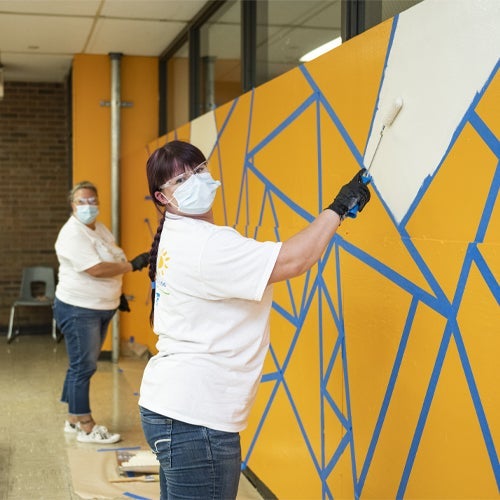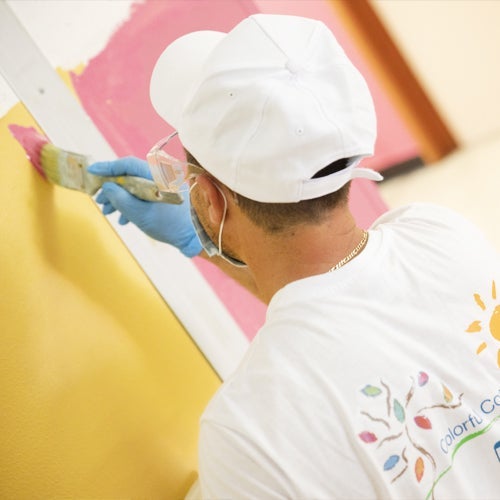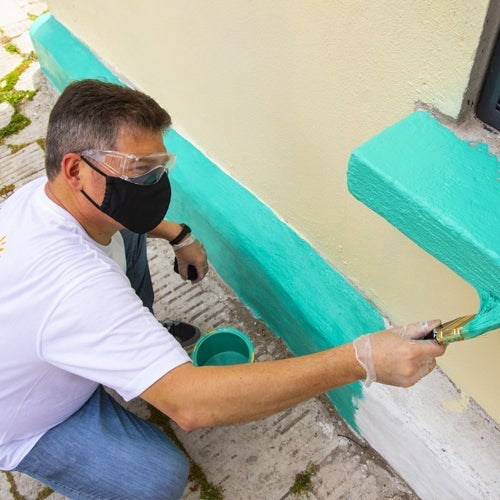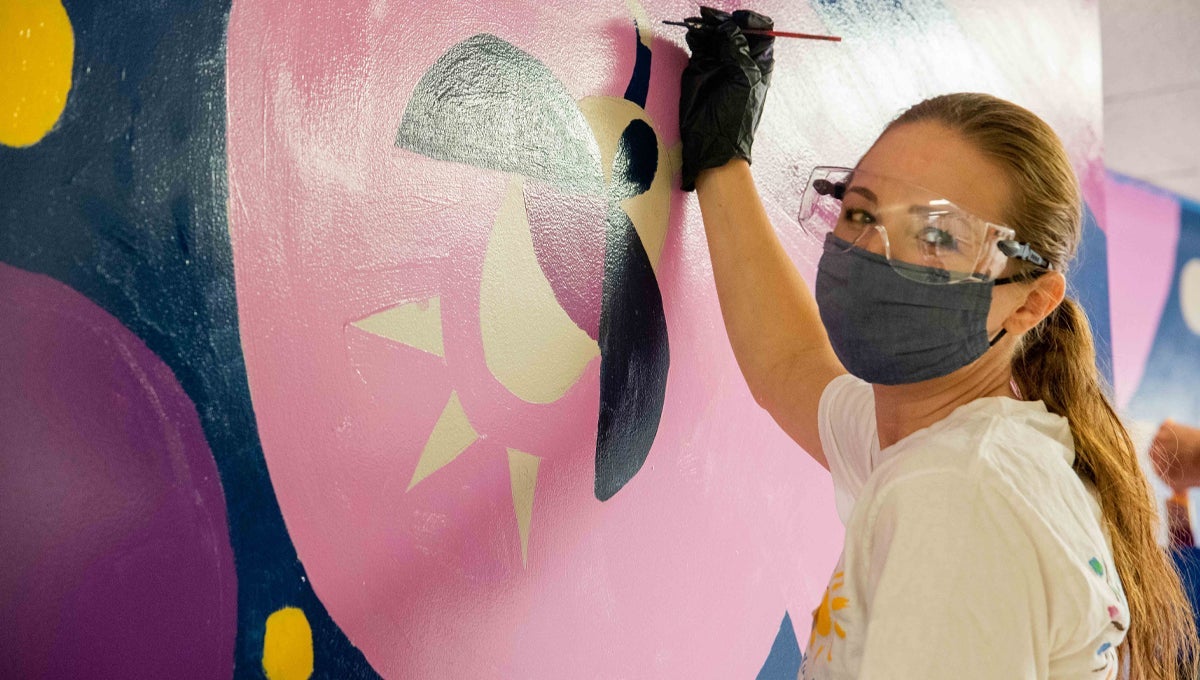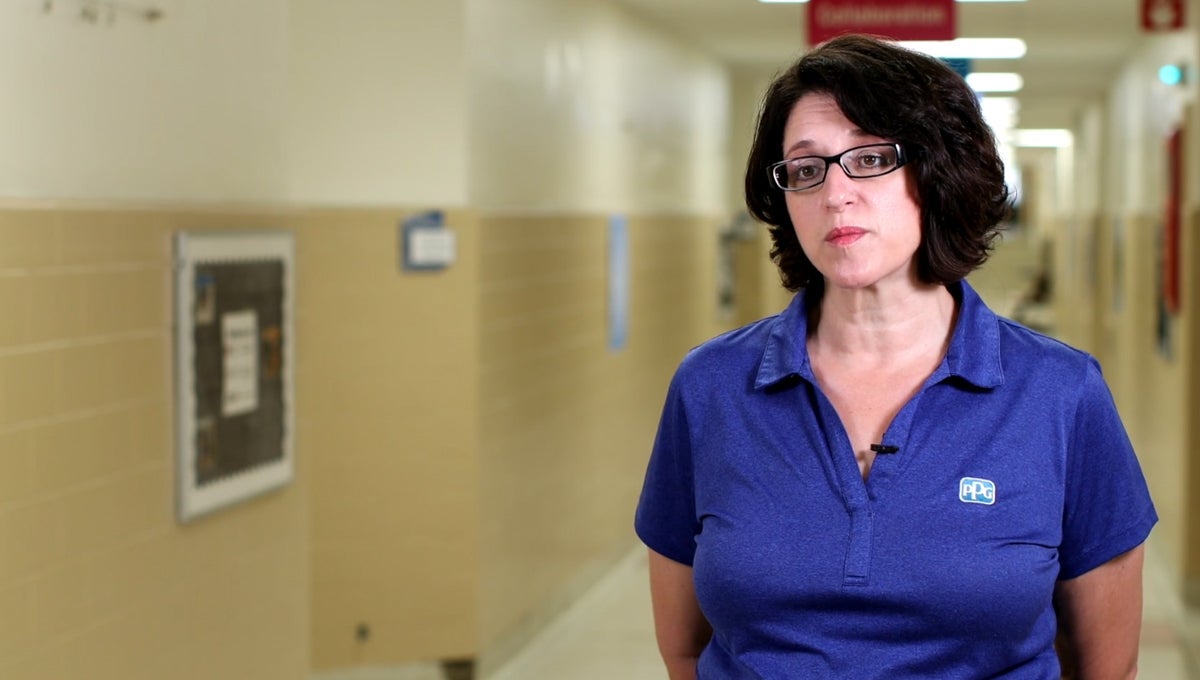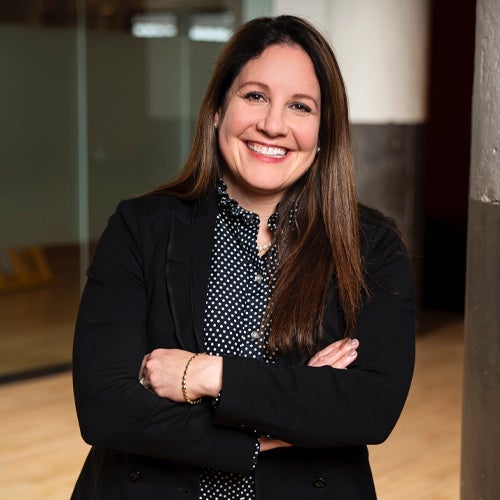Colorful classroom transformations
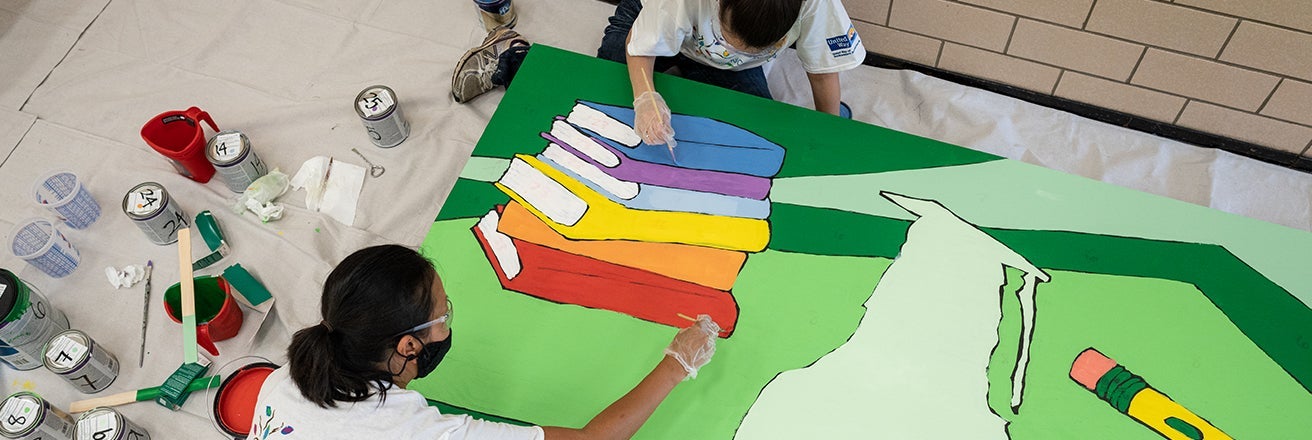
Creating focus in a chemistry lab. Stimulating creative writing. Sparking conversation and collaboration for math problem-solving. Color is a connecting thread for spaces where students feel comfortable, resilient and encouraged.
We’re acutely interested in supporting positive educational experiences, complemented by colors specifically intended to enhance learning and improve both students’ and teachers’ experiences in the classroom by increasing their feelings of engagement.
At COLORFUL COMMUNITIES® projects around the world, PPG color experts and volunteers evaluate the readiness of physical classroom environments to serve as adaptive, welcoming new spaces for positive academic outcomes. We infuse classrooms with colors that pair with the learning objectives for the classroom while considering factors like students’ ages, curriculum and local, cultural influences.
Our employee volunteers have picked up their paint brushes and transformed nearly 100 educational spaces to surround students with effective learning environments and opportunities for collaborative, hands-on learning.
COLOR CHOICES FOR LEARNING
PPG knows color and the science behind it. Our team is experienced in applying principles of Color Psychology to maximize educational environments.
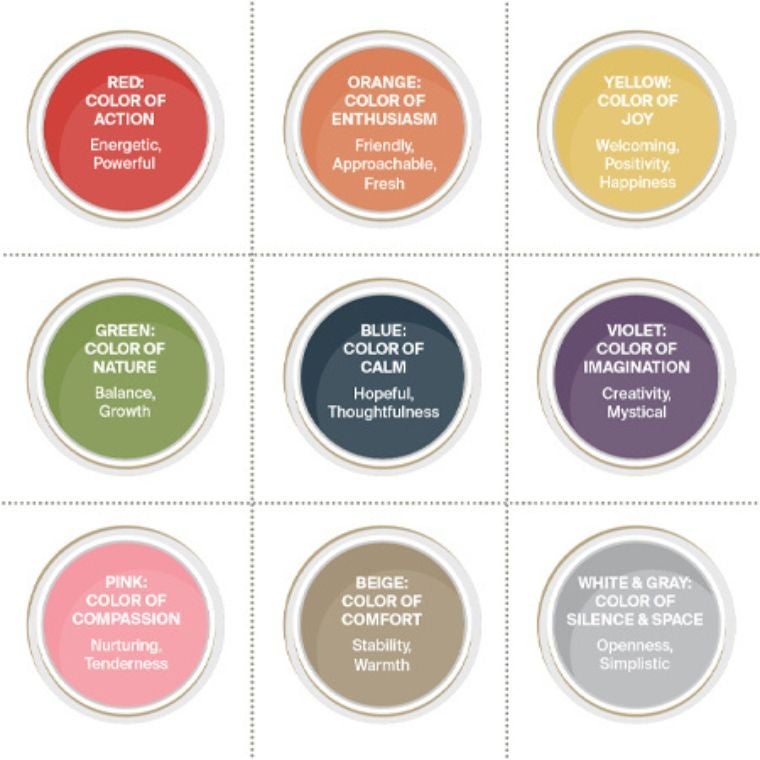
As part of our 2020 research, we sought to assist educators in exploring colors that generate desired outcomes in their unique classroom settings. Creating focus, energizing, activating. Every color contributes to a student’s experience within a classroom.
Interested in learning more about color section advice in learning spaces? Read our PPG expert Q&A.
Also, consider these quick tips:
- Rooms with different purposes require different color schemes.
- Certain colors can enhance areas of high energy and creativity or promote calm, concentration and clear thinking. Where and how color is used matters.
- Balance is key; use of too much bold or bright can be overstimulating. Consider the desired impact of the color and how much time a student spends in the space.
- Student age is an important factor; primary schools often use warm off whites or light creams as a base with brighter colors as accents, while middle schools are better suited for bright to medium bodied colors.

